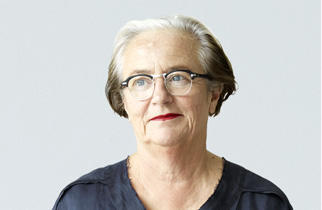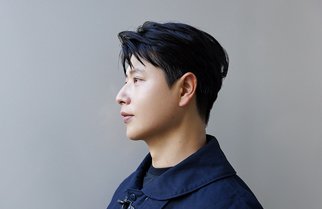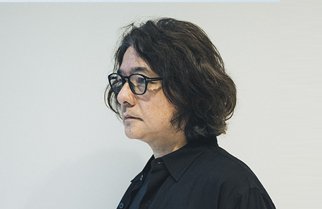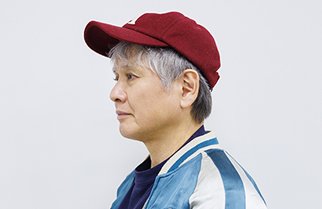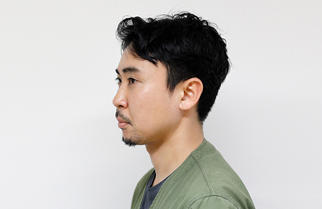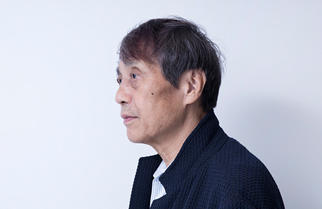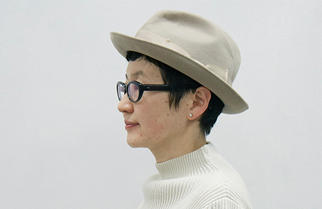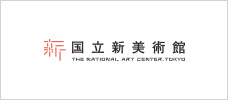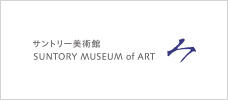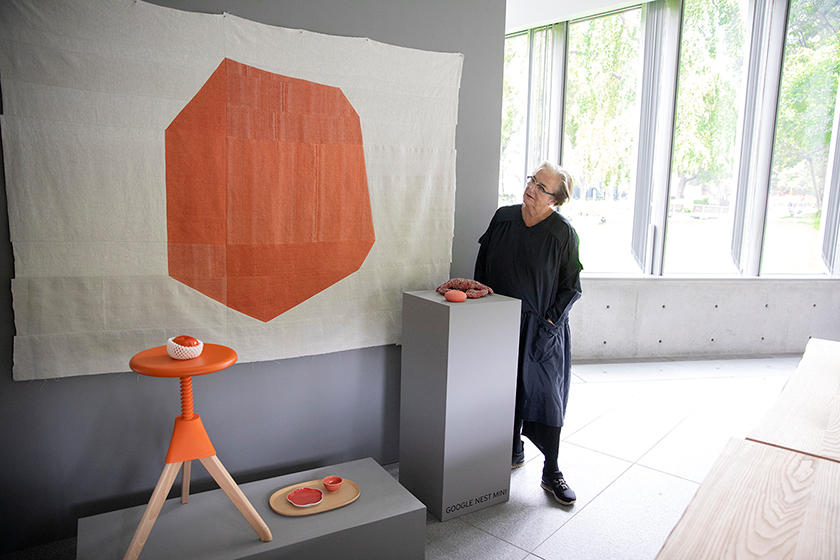
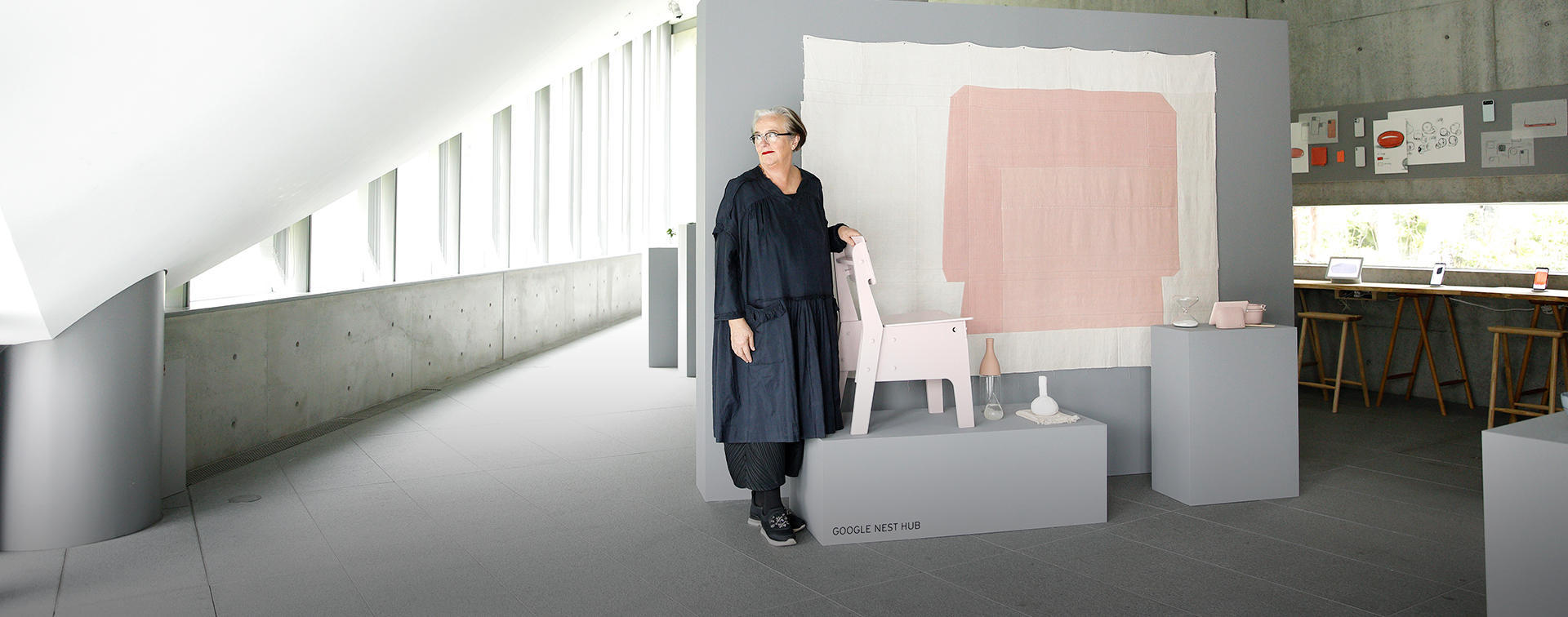
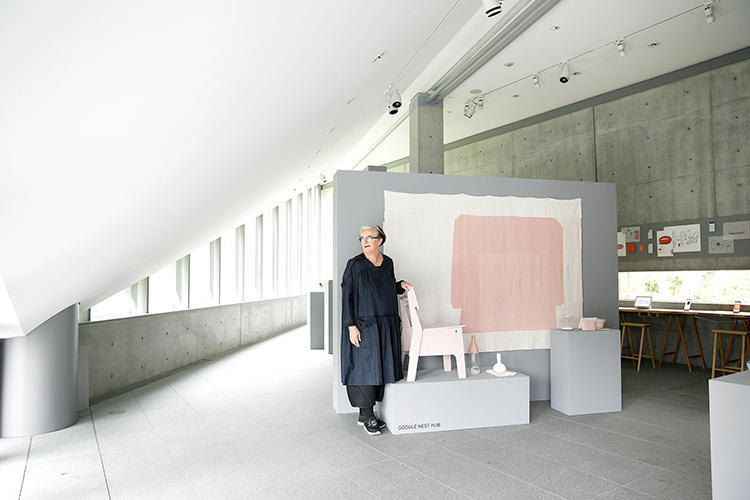
INTERVIEW
111
Lidewij EdelkoortTrend Forecaster
Unique curation to express the originality of Japan
Searching for something uniquely Japan from scratch
Lidewij Edelkoort was a collaborator for Google Design Studio | comma, an exhibition held from Sunday, October 20, 2019, until the following Sunday on October 27, 2019, at 21_21 DESIGN STUDIO. She is globally known as the original trend forecaster, and this was her second-time partnering with Google, after partnering with them at Milan Fashion Week 2018. We interviewed Lidewij, who has been a frequent visitor to Japan for over four decades, about her passion for the exhibition and thoughts on today’s Japanese designs.
A comma means to take the time and to pause.
Google Design Team uses recycled textiles to create products. Design Studio | comma is my second exhibition with Google, after the Milan Fashion Week, and I wanted to convey the meaning of textiles in today's modern times. Textiles can awaken different sensory, and the sensory through fingers has more meanings. The beautiful wall hangings displayed at the exhibition were created by two Dutch interior architects from Studio INAMATT recycling fragments of antique linens. The duo successfully expressed Google's project concept through abstract images.
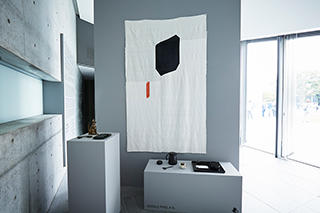
Google Design Studio | comma
Google Design Studio | comma is an installation-based exhibition, produced by Google's vice president of design for hardware, Ivy Ross. The latest hardware from Google, items selected by the exhibition collaborator, Lidewij, and textile arts by Studio INAMATT are displayed side by side to demonstrate how technology integrates into our daily lives.
In front of the textile arts, the tables are placed to display cups, glasses, and other items that are incorporated into our living space, and most of the displayed items are the ones that Japanese people use on a regular base. The colors used are magnificent and blend well into each living scene on display. My goal for the exhibition was to express the harmony between these items in our living space and Google products.
The exhibition was titled Google Design Studio | comma. A comma means to take the time and to pause. While technologies have accelerated how we live our day, it also leaves us with the opportunity to talk about different technologies that can help slow down the time. These technologies are the ones that create a "comma' in our daily lives, for example, by helping us find a tree to hug, a recipe requiring us to spend 5 hours to cook, or a way to meditate.
Isn't "comma" a beautiful word? When I saw the title and graphics, I was struck by their beauty. Finding a proper word is also a design. That is having a design mentality where multiple elements create designs.
Simple slowing down is not enough. We need to slow down to a greater degree.
We see technologies all around us. They are in our bedrooms, bathrooms, and kitchens, or they can be found anywhere as a part of the sports we play or hobbies we enjoy. This implies that we have established a very intimate relationship with technologies, the same type of relationship we build with our pajamas, slippers, teacups, towels, or teddy bears. To express this sentiment, I asked Google's design team I worked with to create technology products that are small, intimate, and familiar in our lives. My request was the opposite of what major technology names aim to do.
The answer to creating a future where technologies are integrated into our lives is not always the technologies that help us advance. We cannot advance any further. If there is anything beyond where we are, it is the end of the story or the annihilation. This should be a good enough reason for us to slow down. Simple slowing down is not what I am talking about. We need to slow down to a much greater degree.
Our team needs to educate people the ways to make smarter choices and efficiently consume products. For example, instead of frivolously buying multiple items, people should ponder the best items for spending the same amount of money. This means people need to enjoy things and spend more time to appreciate the beauty, and this is the basis of what we are trying to convey at the exhibition.

What we need today is the ability to build a concept from a single word.
The presence of Japanese designs is starting to fade worldwide. I know that Tokyo often hosts events for designs, but I feel the strength that Japanese designs possess is not utilized to its full potential. It is almost as if the borderline between an object with great designs and one without is blurred. There is a considerable gap among people in terms of the way they conceive the difference between the two. Since the people in Japan are very keen on things that are "kawaii (cute)," the linear designs are extremely polished. Having seen many "kawaii" products with no design elements beyond "kawaii," however, I sense that people fail to understand that "kawaii" and "great designs" can cohabitate in one product. Most of these products end up being kawaii and kitsch.
The absence of the ability to understand the difference is most likely the lack of education that provides people with the proper knowledge. Universities that teach technical content are abundantly available. Still, the educational agencies that teach the concept structures such as the way we look at the future and care for the earth are unfortunately not very common. Revitalizing what we do well and improving the environment can generate new design ideas, but no school teaches that.
If I were to open a school, I would first teach "the way of thinking." What we need today is the ability to build a concept even from a single word in a dictionary. The ability to build a concept can be applied not just to manufacturing but also to designs for services, landscaping, food, and everything that has to do with creativity.
Schools in Japan practice the repetitive process of completing assignment after assignment. I am sure that the process serves its purpose in the end, but we need to train our brains so that they are capable of spontaneously recognizing new needs and trends. We need to be able to forecast future demands and trends among people. People are constantly changing at the radical and extreme speed today, and the action of "thinking" has become more crucial than ever.
Japan has some amazing anonymous designers.
Currently, in Europe, there is a movement among people for designs to use and experiment with new textiles, and the ability to do both is becoming more critical is becoming more critical. Japan used to excel in this field. Over the past four decades, I have come to Japan nearly sixty to seventy times and witnessed some of the most incredibly creative periods of this country.
I was there to witness, for example, the start of MUJI, the progression of Rei Kawakubo, the invincibility of Yohji Yamamoto, and the prodigious evolution of Issei Miyake. I have been monitoring UNIQLO since the launch of the brand, too. Japan also has nendo as one of their more recent international designers. I have seen them all; I have seen the trends in Japan. While Japan has proved the level of creativity for designs, I feel that the newer generation of designers is pampered. This does not apply to only Japan. The newer generation of Milanese designers is also extremely pampered.
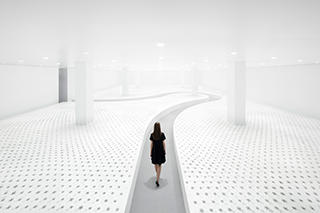
nendo
nendo is a design studio founded in 2002 by Oki Sato that designs architecture, interiors, household products, and graphic objects using refined forms and colors. During Milan Design Week 2019, nendo has teamed up with daikin to create the 'breeze of light' installation.
Photo by Takumi Ota
There are, of course, many talented designers, as we can see among design students in other Asian countries. The original Japanese design context has been adopted in South Korea and China, and the designers in those countries are beginning to demonstrate comparable knowledge and taste. Today, Japanese designers have become none other than just another group of designers among other groups of Asian designers. Soon enough, I predict designers from Vietnam and Indonesia will join the leading groups.
Talented designers in Japan today might be the ones that are anonymous and unknown. I come across simple yet beautiful household products by anonymous designers in Japan. I can talk about the interior floor at Isetan as an example. Their kitchen section, especially, carry products and art crafts that have fascinating designs. The baskets, ceramic wares, glasses, kitchen textiles, and most of the other products sold are far superior compared to the ones from other countries, and they represent what "arts and crafts" are.
The flow of the designs will shift everything to go "soft."
In 1998, I forecasted the start of a new design field and introduced the concept of "softwear." My concept firmly remained unchanged through the exhibition with Google at Milan Design Week 2018 and still remains today. The introduction of telephones, computers, screens, and other tools has enabled us to do a variety of things. Everything can be expressed visually and researched. They also facilitate communications. People are developing more intimate relationships with the technologies, almost friend-like relationship, and everything is going "soft." Clothes, for example, are beginning to resemble pajamas, shoes are slippers, and food is drinkable substances like a smoothie.
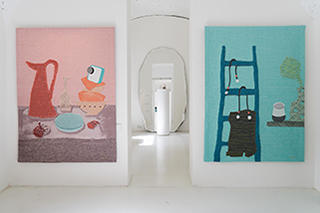
Softwear
Softwear is a concept introduced by Lidewij in 1998. She forecasted a future where technology makes working from home a typical lifestyle, and the technology integrates into our lives as the borderline between work and private life diminishes. She called it "softwear." During Milan Design Week 2018, she and Google teamed up to express the concept and hosted an exhibition under the title of said concept, "Softwear."
Right around the time I was conceiving the idea of "softwear," I took on a project by Isetan. I proposed to apply the concept of "softwear" to the entire project floor. My vision was to express leisure, so I wanted to gather and integrate comfortable clothes, lovely Nomadic lamps, CDs, and other electronic devices. However, I proposed the concept twenty years too early, and, unfortunately, the idea fell through.
The reactions we received during Milan Design Week 2018 were very positive. Even though the size of the exhibition was smaller compared to other major exhibitions by companies like SAMSUNG, ours attracted a substantial amount of visitors and the media press. The beautiful textile work by Kiki van Eijk captivated everyone's heart. Since we succeeded in conveying the message in Milan and now Tokyo, I would like to hold the next exhibition using the same concept in a different city, preferably somewhere in the southern hemisphere. I want to work with the local textile artists to deliver what is unique about the city. Perhaps one day, I can write a book about my exhibition experience in these three cities.
I could have lived in Japan in my previous life.
Google Design Studio | comma, to me, is very Japanese. The wall hangings by Studio INAMATT are Japanese to a certain extent since they are made of similar textiles as the traditional Japanese quilts but using a newer approach. At the exhibition, we showcase classy and high-end household products as well as cute animal-motif objects, which I selected using my cultivated Japanese perspectives. One of the objects I want to introduce is the beautiful object of "Inari fox." Inari Fox is the protector at old shrines, and the one we have at comma has similarly become the symbol of protector for this exhibition. This is the perfect example of the idea of animism, which objects, places, and creatures all possess a distinct energy and spiritual essence. I believe animism will influence our futures. The sight of this Inari fox will elicit a sense of sacredness and the desire to value our lives. We do not need anything else when the object itself possesses energy.
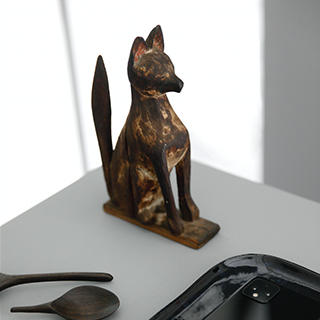
Fox Art Object
The art object is designed after the Inari fox revered at shrines. Lidewij selected the object based on her cultivated Japanese perspectives. She was initially surprised by how many items that used animal motifs were available in Japan.
Every so often, Japanese people ask me if I am Japanese. I probably had lived in Japan in my previous life. Japan has always held a special place in my heart. Having worked for Nissan as a consultant for twenty years, I know Japan inside out. I have even teamed up with textile weavers in Yamanashi with whom I still work and have published a beautiful textile book.
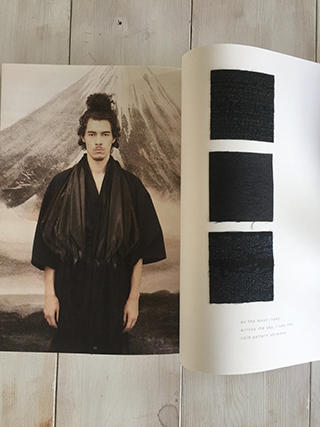
yamanashi textile book by Lidewij Edelkoort
Yamanashi prefecture has more than 400 years of history as a textile weaving region. Lidewij co-published "yamanashi textile book by Lidewij Edelkoort" with Yamanashi to promote the beauty of their textiles. She visited the local weavers and selected the textiles for the book. Combined with visuals, she created a beautiful and tranquil book featuring the superior creativities and techniques of the weavers, as well as the potentials of Yamanashi.
Japan has some fantastic health-conscious projects. I am intrigued by Japan's naturally scented detergent in a beautiful packaging that is also environmentally-friendly. I had already forecasted the trend ten years ago, but projects like this are far more embedded in everyday life here in Japan compared to the rest of the world. I have noticed that this type of day-to-day attentiveness is becoming more progressive. As I was thinking about why it is progressive, I started to feel the increasing importance of tea ceremonies in Japan has something to do with it. The variations of teacups and tea bowls seem to be increasing. I was hoping to go deeper into researching the trend, but my trip to Japan was delayed by two days because of the typhoon, and I missed the opportunity to do the research.
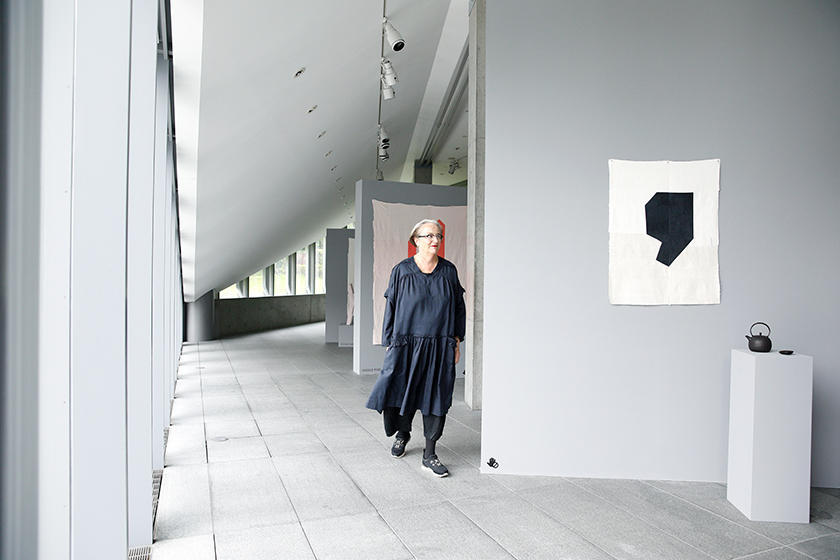
Develop a small-scale life in Roppongi Village
Roppongi is an amazing area with some open space and does not drain the energy out of people like many other areas do. However, I feel Roppongi has more room to grow. I would plant more plants and trees and build traditional houses and other Japanese architectures incorporating newer techniques and technologies. While Japanese homes tend to be compact, Roppongi is a perfect area to showcase new architectural designs. The extra space the area has makes it easier to build or rebuild things. Maybe, some business entity that is not quite the same as a hotel or Airbnb is a good idea.
Roppongi should be considered a village, not a city. Life should be developed in small scales in Roppongi Village with a square where people dance and music plays. A while ago, I went to Woodstock to catch a bus. A drum festival was happening in the square, and people were strumming the drums and dancing freely. It was a simple festival that Japanese people would undoubtedly enjoy. With the unused land Japan still has, Japan can have similar festivals. Based on how many children were at Woodstock, I can also suggest for Roppongi Village a studio as space to creatively collaborate with children. But once again, it has to be a small-scale studio.
Roppongi Village will also need an institution for designs, similar to a design college, where designers work alongside amateur designers to create 3D print, textiles, and glass art. The institution should have an open atmosphere to encourage amateur designers' presence. Setting up a culinary institution is a fun idea, too, and the general public should be invited to be a part of the institution. The Biennale will also be an excellent addition.
Curation in Roppongi area
Shopping malls need to be reinvented in Roppongi. As people go to the mall less frequently, what the area needs is not the focus on selling the land per square meters but the curation of malls and brands. The incentive behind the revitalization of the area should never be monetary. First, we need to brainstorm what the area needs to make it more appealing. I say cycling paths need to be built.
The stagnant restaurant business in Japan is another one of my concerns. The solution to revitalize the business is the reincorporation of traditions. For example, Japanese cafes and bars need to be modernized. The majority of tourists in Japan are from South Korea, China, and the Philippines. But why do restaurants here pour so much energy in making everything, including people, appear more Western? This is very difficult for me to understand because, if I could, I would transform everything to look more Japanese.
I think Japan lacks varieties. This is not limited to restaurants, but also businesses overall. Japan needs unique brands and stores. A good example is Dover Street Market, which is the only store I am a fan of. The products are the same at their shops in Tokyo, London, and New York, but they look different from shop to shop. They also opened Dover Street Perfumes Market in Paris to specialize in perfumes from independent brands. Shops like this will play an indispensable role in promoting popular brands and unknown brands. Because of this, we will be enticed to seek things that are unique and crafted yet unknown, things that make them say, "I have never seen this before!"
I also noticed that there are not many things in Japan that are originated in Africa and Morocco. Despite the fascinating events and movements happening in Africa, Japan focuses on the United States and Europe. In other words, elements of Japan are starting to fade. I see that Japan still has places like Ritz Carlton of Kyoto that values Japanese motifs, but I think what Japan needs is to go back to the beginning, like in the game of Monopoly, and search for the originality of this country.
Editor's Thoughts
These eye-pleasing household products and wall hangings displayed at the exhibition added warmer, more intimate sentiments to the everyday technologies around us. It seemed as if they were the reflection of Lidewij's nurtured aesthetic senses through decades of thorough researches and her very gentle personality. The interview with her gave me the insight that taking a deep breath or creating even the tiniest "pause" in our busy lives can change the way we interact with technologies, and we view the city. (text_akiko miyaura)
RANKING
ALL
CATEGORY




